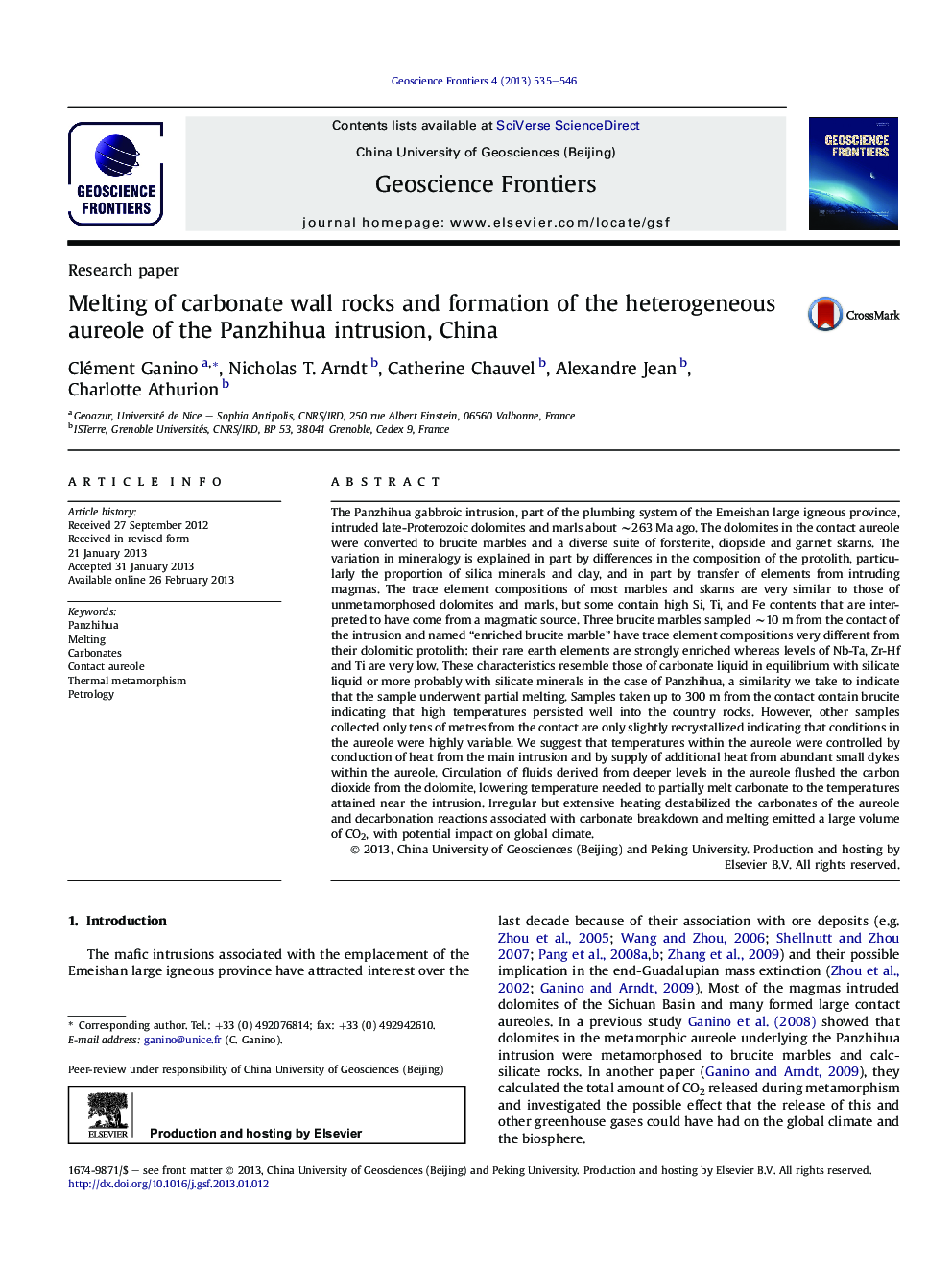| کد مقاله | کد نشریه | سال انتشار | مقاله انگلیسی | نسخه تمام متن |
|---|---|---|---|---|
| 4681705 | 1348868 | 2013 | 12 صفحه PDF | دانلود رایگان |

The Panzhihua gabbroic intrusion, part of the plumbing system of the Emeishan large igneous province, intruded late-Proterozoic dolomites and marls about ∼263 Ma ago. The dolomites in the contact aureole were converted to brucite marbles and a diverse suite of forsterite, diopside and garnet skarns. The variation in mineralogy is explained in part by differences in the composition of the protolith, particularly the proportion of silica minerals and clay, and in part by transfer of elements from intruding magmas. The trace element compositions of most marbles and skarns are very similar to those of unmetamorphosed dolomites and marls, but some contain high Si, Ti, and Fe contents that are interpreted to have come from a magmatic source. Three brucite marbles sampled ∼10 m from the contact of the intrusion and named “enriched brucite marble” have trace element compositions very different from their dolomitic protolith: their rare earth elements are strongly enriched whereas levels of Nb-Ta, Zr-Hf and Ti are very low. These characteristics resemble those of carbonate liquid in equilibrium with silicate liquid or more probably with silicate minerals in the case of Panzhihua, a similarity we take to indicate that the sample underwent partial melting. Samples taken up to 300 m from the contact contain brucite indicating that high temperatures persisted well into the country rocks. However, other samples collected only tens of metres from the contact are only slightly recrystallized indicating that conditions in the aureole were highly variable. We suggest that temperatures within the aureole were controlled by conduction of heat from the main intrusion and by supply of additional heat from abundant small dykes within the aureole. Circulation of fluids derived from deeper levels in the aureole flushed the carbon dioxide from the dolomite, lowering temperature needed to partially melt carbonate to the temperatures attained near the intrusion. Irregular but extensive heating destabilized the carbonates of the aureole and decarbonation reactions associated with carbonate breakdown and melting emitted a large volume of CO2, with potential impact on global climate.
Figure optionsDownload as PowerPoint slideHighlights
► Petrology/geochemistry of the contact aureole show conditions were heterogeneous.
► Temperature in the aureole was controlled by conduction of heat from the intrusion.
► Abundant small dykes supply additional heat producing distant brucite marble.
► Circulating water flushed the CO2 from the dolomite, lowering melting temperature.
► Decarbonation from carbonate breakdown and melting potentially impacted the climate.
Journal: Geoscience Frontiers - Volume 4, Issue 5, September 2013, Pages 535–546